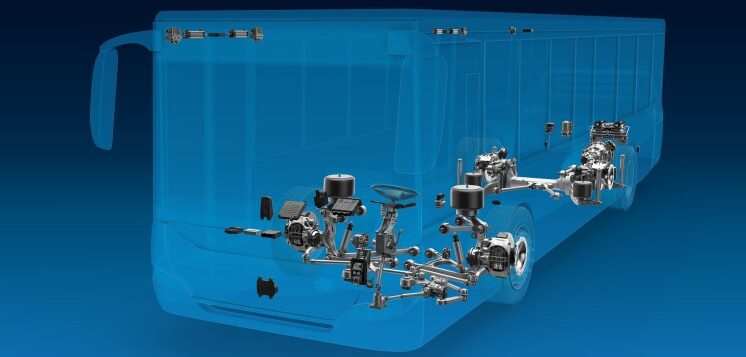ZF has launched an Energy Management System (EMS) specifically for electrified commercial vehicles, which can factor in vehicle routing when calculating energy usage.
According to ZF, its EMS can control all of a vehicle’s auxiliary units such as air compressors, steering pumps and thermal management, as well as coordinating the energy requirements of the driveline. The company says that by taking an integrated approach to control, overall vehicle efficiency is increased, with a knock-on effect on range and battery service life. Notably, ZF is offering the EMS as an add-on to commercial vehicle electric drive systems already in volume production.
“Only such an integrative approach makes it possible to further increase the efficiency of electric vehicles,” explained Winfried Gründler, who is responsible for e-mobility in ZF’s Commercial Vehicle Technology division. “This illustrates the strategic importance that software expertise has for our group strategy: next-generation mobility.”
Using what ZF calls its ePreVision function, the control software can take into account the topographical profile of a vehicle’s route when coordinating overall energy requirements. For example, during predictable, long, downhill runs, the AC compressor can operate on recuperated electrical energy. The EMS can also take over charging management at the depot, where there are further advantages to be had from the predictive functions. For example, if a vehicle is routed via a long downhill run on its first trip after leaving the depot, the batteries do not fully charge because this recuperation phase is predicted and taken into consideration.
Should the charging state of the battery decrease during a long journey, the EMS can lower the energy requirement priority of the auxiliary units to extend the range. Since the EMS continuously checks the functional status of all consumables, it also simplifies diagnostics.
“With our system, we are targeting bus and truck manufacturers who are unable to develop their own EMS or want to use them differently,” added Gründler. “Fleet owners such as transport authorities also benefit when only one partner assumes overall responsibility for the energy management of a vehicle.”


